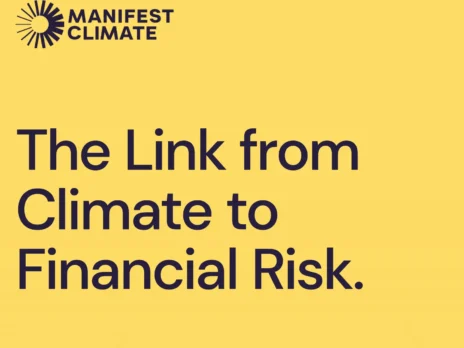

Real estate finds itself on the front line of climate change. The sector is not alone in coming under growing regulatory and investor pressure around evidencing credible net-zero transition plans, but it faces unique challenges when it comes to reducing emissions, addressing transition risks, and handling the impacts of extreme weather events.
According to the International Energy Agency (IEA), real estate generates 40% of global CO2 emissions. The sector is therefore critical to global efforts to meet the Paris Climate Agreement target of limiting average temperature rise to well below 2°C.
With some two-thirds of global building stock expected to endure into the 2040s, significant investment in decarbonisation efforts across existing infrastructure is required, alongside increasingly stringent (and capital-intensive) new-build regulations. The sector must also contend with increased physical and transition risks that may influence asset valuations and investment decisions over time.
In recent years, a significant number of real estate companies have committed to a net-zero transition, but integrating these pledges with asset acquisition, development, management, refurbishment, and disposal requires firms to undergo cultural and operational changes.
“On the one side, we have a growing number of ambitious net-zero and decarbonisation strategies. On the other, these companies are bearing the brunt of physical and transition risks,” says Manifest Climate’s Shashanka Suresh. “The climate crisis is already impacting their bottom lines, be it in the form of rising insurance costs, declining property values, or green building requirements. The real estate sector does not need much convincing to buy into the idea of adaptation being critical.”
Real estate must act fast on climate change
In his role as a climate strategist, Suresh works closely with real estate companies and real estate investment trusts (REITs), helping them navigate the complex climate disclosure reporting landscape, and identify and take action on climate exposures across their portfolios.
While he believes the sector is “heading in the right direction”, Suresh acknowledges that recent struggles have, in some cases, undermined the sort of long-term strategic thinking that fully integrating climate into the heart of one’s decision-making requires.
Commercial real estate was significantly impacted by the Covid-19 pandemic and associated shutdowns, as well as by the mass adoption of remote and hybrid working models. A focus on cost management and efficiency can help accelerate some low-hanging decarbonisation efforts on the margins, but will not be enough to finance the wholescale changes the sector has to make. However, the capital investments required for climate adaptation and mitigation are a harder sell in what remains a challenging environment.
Increasingly stringent regulatory requirements mean that such decisions can only be delayed for so long, however. This pressure, combined with the cost of failing to properly price in climate risk exposures, means the potential benefits of taking a lead on climate strategy cannot be overstated.
“It is becoming easier to have these conversations,” Suresh insists. “The lifespan of a building is typically 30 to 40 years. Previously, climate change was often seen as something far down the road; investors were more focused on how they could see capital gains throughout that life cycle. Now that they see climate change’s impact today, that is significantly moving the needle.”
The future has arrived
Physical climate impacts are already disrupting real estate. Suresh points to the hurricanes and storms that battered Canada’s east coast last year, severely impacting areas where property owners have no recourse to flood insurance coverage. He also cites the surge in California wildfires, where insurers have sought to drop customers located in ever-expanding “high-risk” regions.
“Real estate leaders can see that this is no longer a problem for the future,” he explains. “It’s unfolding now and it’s unfolding quickly. They know they need to really think about how physical and transition risks and opportunities are identified, assessed, reported and managed.”
This means ensuring that real estate enterprises make the best use of data and analytics. A number of bodies, including the British Property Federation and the Investment Property Forum, have cited a lack of quality data as a barrier to making and executing real estate climate change strategies. With his experience conducting environmental audits for real estate companies, Suresh acknowledges that data collection of the scale required has traditionally been a painful process. However, the emergence of common frameworks and industry-specific tools is helping to facilitate better data collection and strategic thinking – as well as affording companies opportunities to study best practices among their peers and the wider industry.
He cites the Task Force on Climate-related Financial Disclosures (TCFD) recommendations and the GRESB real estate assessment resiliency module as two essential means of identifying physical and transition risks and framing thoughts around the capture and reporting of data. The Science Based Targets Initiative (SBTi) and Carbon Risk Real Estate Monitor (CRREM) have also created a risk assessment tool for crafting decarbonisation pathways that Suresh sees gaining major traction in the EU and UK.
Common tools and frameworks
“There’s a firehose of information related to climate and it can be easy to get lost in the weeds,” he says. “But with common frameworks and standards emerging, it becomes far easier to both gauge where you are in your journey, where gaps still exist and what others in the market are doing well. As more companies use the same methodologies, it gets to a point where the industry is working together towards a common goal, rather than in silos.”
Manifest Climate counts a number of real estate companies and REITs among its client base. Its platform leverages machine learning algorithms to surface best practices by rapidly reviewing public disclosure documents, solutions for which, Suresh says, the real estate market has a significant and growing appetite.
While private companies are not necessarily under the same regulatory pressure as their publicly listed peers, they too are making significant use of such benchmarking and gap analysis tools. Demand from investors for decision-useful climate information means that, in many cases, their standards are well advanced of those being compelled to comply by law.
Beyond benchmarking, alignment, and reporting solutions, Manifest Climate is also conducting portfolio-level risk assessment work with a number of clients, helping to identify physical and transition risk exposures and their associated data requirements, as well as integrating this information into their investment strategies.
“It is as much about identifying opportunities as risks,” says Suresh. While hopeful about the direction of travel, Suresh also acknowledges that speed must be greatly accelerated.
By building climate competency throughout the real estate life cycle; embracing common frameworks and new tools; and ensuring that the industry is transparent and collaborative in how it delivers on its climate goals, the sector can successfully play its critical role in the fight against climate change – and fully benefit in the transition to a low-carbon economy.







